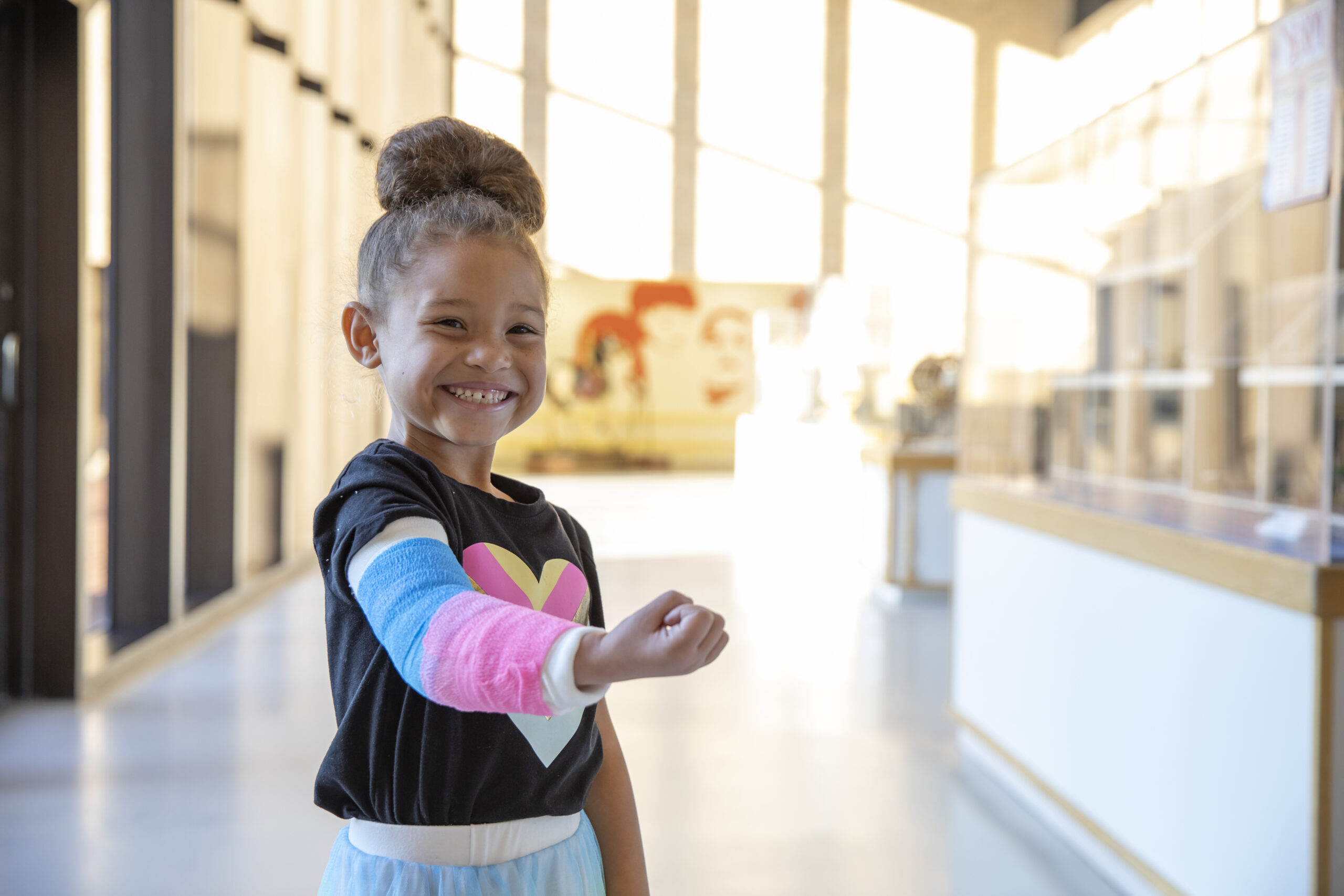Hand Research

Center For Excellence In Hand
Scottish Rite for Children was the first pediatric orthopedic center in the United States to employ full-time hand surgeons. Scottish Rite has treated thousands of patients with hand and upper limb conditions and is a leader in training hand surgeons from around the world.
The Charles E. Seay, Jr. Center for Excellence in Hand provides specialized care for children born with congenital upper limb anomalies through quality patient care, education and research. In addition, it provides care for children with acquired problems of the hand and upper limb.
The hand center staff is dedicated to the well-being of the child, both physically and emotionally. In addition, organized support groups are available to families to help cope with issues that can commonly arise as the child goes through development. (The physicians deliver care in a compassionate, reassuring environment, considering the needs of the child and family as a whole.) Our goal is to help children with congenital hand anomalies become active, happy, productive and independent adults.
Current Studies
Upper Limb Anomaly Registry
The purpose of this study is to examine the epidemiology of children with upper limb anomalies who present to the Hand Clinic at Scottish Rite for Children. Researchers will be looking at patient charts from January 2000 and will also collect information on new patients who present in the clinic.
INCLUSION CRITERIA
- Male and female patients with an upper limb anomaly
- Between the ages of 0-18 years at the time of presentation
Triceps Long Head Transfer for Amyoplasia
The purpose of the Long-Term Outcomes of Long Head of the Triceps Transfer in Patients with Amyoplasia study is to investigate the long-term outcomes of the long head of the triceps transfer to promote active elbow flexion in the amyoplasia patient population. Patients with amyoplasia lack active elbow flexion. This deficiency affects their ability to eat as well as interfering with performance of daily living.
INCLUSION CRITERIA
- Male and female patients seen at the Hand Clinic between January 1, 1990, and February 1, 2014
Impact of Camp Participation
The purpose of the Impact of Camp Participation in School-Aged Children with a Congenital Hand Difference study is to investigate the impact camp attendance and participation may have on a child with a congenital hand difference. The study will evaluate a child’s self-esteem, function and participation in activities, as well as their relationship with peers, before camp as well as after attending camp. In addition, the study will identify factors or variables that may affect a patient and their family’s willingness to attend camp as well as assess expectations of camp.
INCLUSION CRITERIA
- Patients between 10 and 14 years of age with a congenital hand difference who are invited to participate in hand camp
Unilateral Limb Malformation
The purpose of the Unilateral Limb Malformation: Is Somatic Mosaicism an Underlying Cause? study is to investigate and report cases of unusual unilateral (one-sided) hand or upper limb anomalies (birth defects) that may be related to post-zygotic genetic mutation (a mutation that an organism acquires after fertilization, rather than inheriting a mutation from its parents) as an underlying etiology for the asymmetric malformation (deformity that is not the same on both sides).
INCLUSION CRITERIA
- Male and female patients between the ages of 0 and 18
- Diagnosis that includes an asymmetric limb malformation
Macrodactyly Pathology
The purpose of the Cellular and Molecular Pathology of Macrodactyly study is to collect and preserve surgical material to study the cellular and molecular mechanisms underlying the pathology of macrodactylous digits, a congenital malformation of the hand characterized by large, malformed fingers.
INCLUSION CRITERIA
- Planned surgical correction of macrodactyly
Dysplastic Shoulder Development for Brachial Plexopathy
The purpose of the Cellular and Molecular Pathology of Macrodactyly study is to collect and preserve surgical material to study the cellular and molecular mechanisms underlying the pathology of macrodactylous digits, a congenital malformation of the hand characterized by large, malformed fingers.
INCLUSION CRITERIA
- Planned surgical correction of macrodactyly
